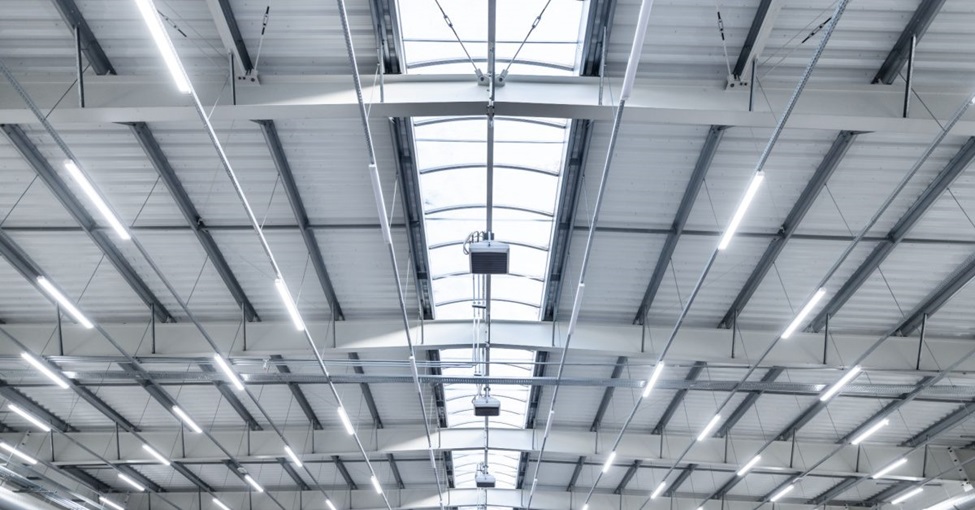Ensuring proper lighting in a warehouse isn’t just about keeping the space illuminated; it’s about optimizing productivity, enhancing safety, and reducing energy costs. The shift towards LED lighting technology has been a game-changer for warehouse operations, offering benefits that traditional lighting systems can’t match. Here are the top 5 tips for integrating LED lighting solutions into your warehouse environment to achieve the best results.
1. Assess Your Lighting Needs Carefully
The first step in optimizing your warehouse lighting with LED technology is to conduct a thorough assessment of your current lighting situation and your specific needs. Consider factors such as:
- The size and layout of your warehouse
- The height of the ceilings
- The types of activities being performed (e.g., picking, packing, assembly)
- Areas that require high levels of precision or safety
- This assessment will help you understand the intensity and type of LED lighting that will best suit your space. Remember, different areas may require different lighting solutions.
2. Opt for High-Quality LED Fixtures
Not all LED lights are created equal. Investing in LED fixtures from high-quality Legacy Lighting can make a significant difference in both the performance and longevity of your lighting solution. Look for features such as:
- High luminous efficacy (lm/W) which indicates how well the fixture converts power into light.
- A high color rendering index (CRI), which will ensure that colors are seen as they truly are, improving visibility and safety.
- Adequate thermal management systems that keep the LEDs cool, prolonging their lifespan.
3. Implement Smart Lighting Controls
One of the most significant advantages of LED technology is its compatibility with smart lighting controls. These systems offer the ability to:
- Automatically adjust lighting based on occupancy or time of day, significantly reducing energy consumption.
- Set up zones within the warehouse, so you only light areas that are in use.
- Integrate with other building management systems for a holistic approach to energy efficiency.
4. Consider the Lighting Design and Layout
Integrating LED lighting into your warehouse goes beyond simply replacing old fixtures with new ones. It involves designing a lighting plan that considers the following:
- Uniformity of light distribution to avoid dark spots and glare that can lead to errors and safety hazards.
- The positioning and angling of fixtures to maximize light coverage and effectiveness.
- The integration of natural light, if possible, to further enhance illumination and reduce energy costs.
5. Plan for Maintenance and Future Updates
While LED lights are known for their longevity and low maintenance requirements, planning for the inevitable is still essential. Consider:
- Creating a maintenance schedule for cleaning and inspections to ensure your LED system operates at peak efficiency.
- Keeping an eye on advancements in LED technology, as newer, more efficient solutions are continually being developed.
- Evaluating your lighting needs periodically, especially if the configuration or use of your warehouse changes.
Promote Sustainability and Eco-Friendliness with LEDs
Switching to LED lighting is not only beneficial for your warehouse’s operational efficiency and cost-saving endeavors but also serves to enhance your commitment to sustainability. LEDs do not contain hazardous substances like mercury, which is present in some traditional lighting options, making them a more environmentally friendly choice. Their long lifespan also translates to reduced waste, as they need to be replaced less frequently compared to conventional bulbs. Additionally, by reducing energy consumption, LED lighting lowers greenhouse gas emissions associated with electricity production. Adopting LED technology demonstrates a dedication to environmental stewardship, potentially boosting your brand’s image and resonating well with eco-conscious customers and stakeholders.
Stay Ahead of the Curve with LED Technology Trends
Keeping up with the latest trends in LED technology can provide additional benefits and savings for your warehouse. Innovations like LEDs with adjustable color temperatures can influence workers’ alertness and productivity by mimicking natural daylight patterns. As LED technology continues to advance, new features such as Internet of Things (IoT) connectivity are emerging. This technology can further optimize warehouse operations by collecting data on lighting usage and integrating it with other automated systems to create a more cohesive and responsive environment. By staying informed about these trends and considering future-proofing your investment in LED lighting, you position your warehouse to take advantage of state-of-the-art developments that can lead to significant operational improvements.
Conclusion
Leveraging LED lighting in your warehouse is not just an upgrade; it’s a transformative move toward efficiency, safety, and sustainability. By carefully assessing your needs, opting for quality, leveraging smart controls, considering design meticulously, and planning for the future, you’ll unlock the full potential of LED lighting in your warehouse. Let the era of dark, inefficient warehouses be a thing of the past. Welcome to the bright future of LED warehouse lighting.




